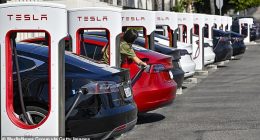
Inflation is near a decade low and well below the 2% level the Federal Reserve targets as ideal. The usual conditions for rising inflation—tight job markets and public expectations of rising prices—are glaringly absent.
Yet anxiety about inflation is at a fever pitch, among economists and in markets, where long-term interest rates have been grinding higher since President Biden unveiled plans for huge new fiscal stimulus.
Behind this dichotomy is a clash of forces. In the near term, plentiful unused capacity and decades of habits are likely to keep inflation low. After years of undershooting 2%, the Fed would like inflation to slightly overshoot. That, it hopes, would banish the specter of deflation and stagnation that has haunted advanced economies for a decade.
“The kind of troubling inflation that people like me grew up with seems far away and unlikely,” Fed chairman Jerome Powell said in late January.
But in the longer term, some economists and investors see a shifting political climate more conducive to inflation rising well past 2%. They argue the Fed’s pursuit of over-2% inflation, Mr. Biden’s $1.9 trillion stimulus plan and new goals such as narrowing racial economic disparities reduce the priority that policy makers will place on inflation.













